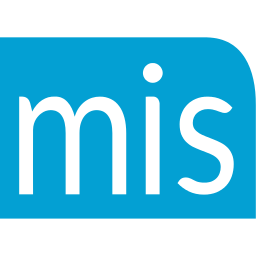 Most sales reps hate getting objections. When they get them, their hands start to sweat, their heart takes the elevator down into the pit of the stomachs, and they start wishing they had gotten that graduate degree and avoided sales altogether.
Most sales reps hate getting objections. When they get them, their hands start to sweat, their heart takes the elevator down into the pit of the stomachs, and they start wishing they had gotten that graduate degree and avoided sales altogether.
This is how most sales reps react when they get objections, but not the top producers. Top producers view and react to objections very differently. To start with, because top producers thoroughly qualify their prospects up front they generally uncover and deal with many objections during the qualifying stage. Objections like, “I’ll have to show this to my partner,” and others are already known and dealt with.
In addition, top producers have taken the time, long in advance, of scripting out two or three different rebuttals to the objections they get, so when they do get them, they know exactly what to say to overcome them. In other words, they are rarely caught off guard, because they know what to say to deal with them.
Third, because top producers know what the objections or stalls are likely to be in advance, and since they are prepared for them with solid scripts and techniques to overcome them, they are able to take advantage of the timing of “when” to handle an objection. Unlike most sales reps who feel they have to handle an objection the moment they get one (and hence instantly lose control of the call), top producers realize that they have three options as to when to handle an objection. They are:
1) When it comes up. Again, because top producers know what to say and how to effectively deal with objections, they have the choice of handling the objection when it comes up or of postponing it for later.
The first choice may be to handle the objection when it comes up. This is usually good if the prospect is rejecting a product or service at the beginning of the pitch because they haven’t been through all the details (features and benefits) of the pitch yet.
The way to handle this is to use a script, of course. But the key is to handle the objection and then move back into the pitch. An example would be if a prospect objects to the price at the beginning. It might go like this:
Prospect: “This is out of our budget – the price is just too high.” (Or any other objection.)
Rep: “You know, it might seem that way now, but the price actually breaks down to about $2.00 per (lead, incident, etc.), and when you look at it that way, it becomes very affordable – especially when you see how much time and effort it saves you. Let me just show you a couple of things…”
In this example, the rep answered the objection but instead of checking in with the prospect to see how the close landed, they instead kept control of the call by continuing on with the pitch.
2) The second option to handling an objection is to postpone it till the end of the pitch. This is ideal if the prospect seems willing to keep listening but is stuck on an issue or two. The important thing is to acknowledge that you heard the objection and promise to handle that at the end. It goes like this:
Prospect: “This is out of our budget…,” (Or any other objection.)
Rep: “I can understand that but let’s do this. Before you make any decision on this, let’s talk about all the things this can do for you first, and then you’ll be in a much better position to decide if this is worth it for you. I even have some payment options that might make the decision easier for you as well.
But first, let me show you this…”
What you’re doing here is delaying answering the objection and thereby retaining control of the call. The nice thing about this is that by the end of your pitch, many times the prospect won’t even bring up the objection at all! You’d be amazed by how often that actually happens once you begin using this technique.
In addition to this, if you know what the objection(s) are at the beginning of the pitch – or in the middle – you can begin pitching and building value around the known problem area (objection).
Postponing answering the objection like this is a great way to get your pitch in, keep control of the call, and prepare yourself for what you know might be coming at the end.
3) The third time to answer an objection is…never! That’s right. So many time prospects will test you and try to put you off with many questions, stalls and objections that it’s just best to not respond at all. Here’s how you do that:
Prospect: “This is out of our budget…” (Or any other objection.)
Rep: “Some of our clients felt like that until they heard about…” (Now give a benefit or two and keep pitching).
This way you’ve acknowledged the objection but you remain positive and so sold on your solution that you let your enthusiasm drive the call – and often times your prospect’s mindset. It is said that enthusiasm sells, and that’s true in many cases. The problem with most sales reps is that as soon as they hear an objection they start to give up.
But by acknowledging, remaining positive, and continuing on with your pitch, you can often override any initial objection and get further into your pitch. In fact if you’ve done this before, then you’ll often find that the prospect changes to a different objection the next time they bring one up!
These three times to handle an objection also work for questions as well. The important thing to remember is that it is up to you as to when to break your rhythm and deal with an objection. The whole point is that you must remain in control of the call.
Try using the techniques and scripts above during your upcoming week of pitching your product or sale. You’ll be amazed by how much easier your sale becomes – and how many more deals you’ll get.

 Last week I gave you the first Three Proven Techniques to help you increase your chances of getting your calls returned. Now let’s look at the final two:
Last week I gave you the first Three Proven Techniques to help you increase your chances of getting your calls returned. Now let’s look at the final two: If you’re struggling to get your voice mails returned, then you’re not alone. Industry stats show that less than 10% of voice mails to new prospects are returned. Because of this, finding the right voice mail message, and knowing a few proven techniques, can be the key to not only making contact with those hard to reach sales leads, but also in developing relationships and getting new accounts.
If you’re struggling to get your voice mails returned, then you’re not alone. Industry stats show that less than 10% of voice mails to new prospects are returned. Because of this, finding the right voice mail message, and knowing a few proven techniques, can be the key to not only making contact with those hard to reach sales leads, but also in developing relationships and getting new accounts. I had a landscaper install a new sprinkler system the other day, and as we stood under the warming sun waiting for his crew to set up he asked me what I did for a living. I told him I was a sales trainer (this is the easiest answer as for some reason as soon as I add “inside sales” to anyone out of the industry, they have no idea what I’m talking about).
I had a landscaper install a new sprinkler system the other day, and as we stood under the warming sun waiting for his crew to set up he asked me what I did for a living. I told him I was a sales trainer (this is the easiest answer as for some reason as soon as I add “inside sales” to anyone out of the industry, they have no idea what I’m talking about). I was asked by a client to make some cold calls into an upper “C” level suite to set appointments for his outside sales team, to show the inside team how it’s done. His inside team first of all had trouble getting these busy people on the phone, and then getting past the first paragraph of their script before getting cut off.
I was asked by a client to make some cold calls into an upper “C” level suite to set appointments for his outside sales team, to show the inside team how it’s done. His inside team first of all had trouble getting these busy people on the phone, and then getting past the first paragraph of their script before getting cut off. If you are trying to set appointments for an outside sales team, or even if you’re trying to generate leads so you can do an over the phone demo later, then you know all about put offs and stalls. While I’ve previously discussed the common ones like, “I’m not interested,” and “Just email me something,” there others that are somewhat harder to overcome…
If you are trying to set appointments for an outside sales team, or even if you’re trying to generate leads so you can do an over the phone demo later, then you know all about put offs and stalls. While I’ve previously discussed the common ones like, “I’m not interested,” and “Just email me something,” there others that are somewhat harder to overcome… Everyone loves to be helpful. Because of this, you have a great opportunity to learn more about your prospects and clients if you learn how to ask the right questions at the right times.
Everyone loves to be helpful. Because of this, you have a great opportunity to learn more about your prospects and clients if you learn how to ask the right questions at the right times. Many inside sales reps (outside reps, too!) struggle when trying to describe their company, products and services, in a succinct and compelling way that engages a prospect and makes them want to hear more.
Many inside sales reps (outside reps, too!) struggle when trying to describe their company, products and services, in a succinct and compelling way that engages a prospect and makes them want to hear more. One area many sales reps struggle in is how to requalify existing accounts, or prospects they haven’t spoken with in a while. Let’s first establish the need to do this, and we’ll address exactly how to do it.
One area many sales reps struggle in is how to requalify existing accounts, or prospects they haven’t spoken with in a while. Let’s first establish the need to do this, and we’ll address exactly how to do it. Nothing signals a sales call more than that worn out opening, “How are you today?”
Nothing signals a sales call more than that worn out opening, “How are you today?”